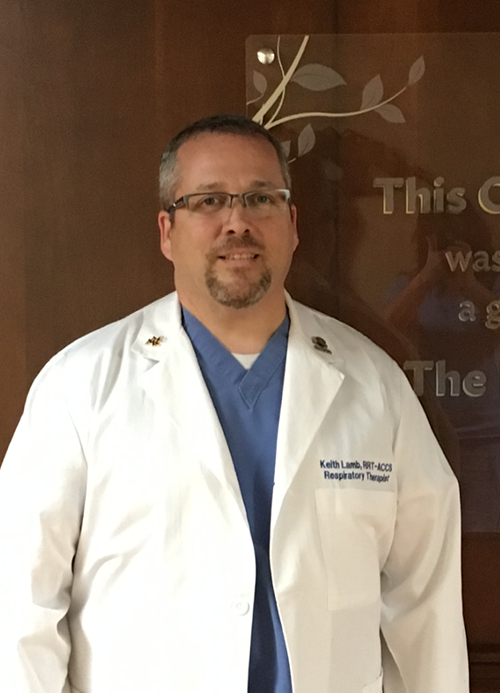 Keith Lamb, chair of AARC’s adult acute care section, shares the top five things he learned from AARC Congress 2015 sessions
Keith Lamb, chair of AARC’s adult acute care section, shares the top five things he learned from AARC Congress 2015 sessionsBy Keith Lamb, BS, RRT-ACCS
AARC Congress 2015 was the most impressive and educational respiratory gathering in history. Although I was incredibly busy presenting and taking part in the process myself, I was still able to take home many very important messages and ideas that will improve my practice and the outcomes of my patients. Here are the top five things I learned to make me a better RT —
- Lung protective ventilation: In talks delivered by Neil MacIntyre, MD, FAARC, and Dean Hess, PhD, RRT, FAARC, I learned more about why it has never been more apparent that mechanical ventilation is responsible for secondary lung injury that worsens mortality and outcomes. It is also exceedingly clear that RTs have a vital role in mitigating these effects of mechanical ventilation. Using appropriate tidal volumes, limiting transpulmonary pressures, using appropriate levels of PEEP, and limiting exposure to high levels of oxygen are paramount to protecting our patients from unnecessary risk and resultant untoward outcomes.
- Noninvasive ventilation: Probably the most efficient way of avoiding the harmful sequelae of invasive mechanical ventilation is to avoid invasive mechanical ventilation altogether. Talks by Carl Hinkson, MS, RRT-ACCS, FAARC, and Brady Scott, MS, RRT-ACCS, FAARC, taught me that techniques of deploying this management strategy have improved, and new interfaces have allowed for better patient compliance. Additionally, a better understanding of the harmful effects of invasive ventilation have allowed clinicians to use NIV in circumstances and clinical scenarios not previously thought effective or appropriate.
- Early recognition of respiratory compromise: Charles Durbin, MD, FAARC, explained why a growing number of sicker patients in our ICUs has led to sicker patients on our general floors. This, coupled with the use of some pharmacological agents, has led to a rise in respiratory compromise and the need to anticipate and recognize these patients earlier to prevent worsening outcomes. There is a growing need for an appropriate response from industry to improve monitoring so that clinicians can be alerted to these patients early enough to intervene and improve patient care and outcomes.
- ECLS: Lectures by Eddy Fan, MD, Tom Piraino, RRT, and Heidi Dalton, MD, added to my knowledge of extracorporeal life support. I learned this modality has quickly been recognized as a viable strategy to prevent the untoward effects of invasive ventilation by removing the burden of gas exchange from the sick lungs. ECLS has become safer to provide and has improved outcomes in patients with refractory respiratory failure requiring high levels of injurious ventilator support. Moreover, there is an ever increasing body of evidence that ECLS may be useful to provide extracorporeal cardiopulmonary resuscitation, or ECCPR, and extracorporeal carbon dioxide removal, or ECCO2.
- HHFNC: Talks by Julie Jackson, BS, RRT-ACCS, and Dean Hess taught me that the humidified high flow nasal cannula has become popular where there is hypoxemic respiratory failure and NIV would typically be employed. HHFNC has been proven to be safe and efficacious in several different patient populations now, and it is reported to be more comfortable for the patient and have better patient compliance than some NIV strategies.
Keith Lamb is an adult critical care supervisor and ECLS and critical care research coordinator at UnityPoint Health System in Des Moines, IA, and chair of the AARC’s Adult Acute Care Section.





